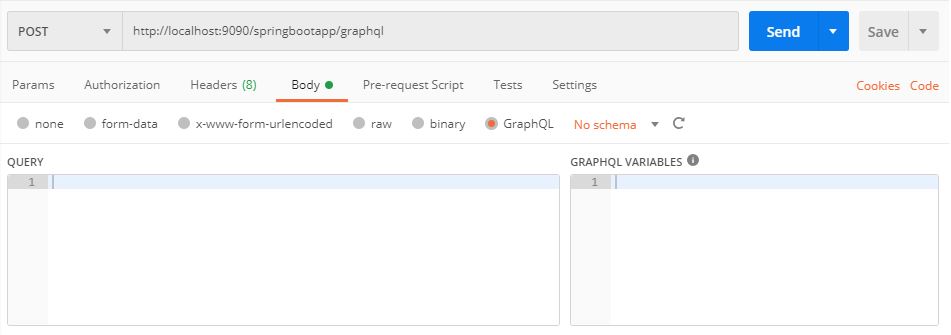1. 概述
本文将介绍如何使用 Postman 对 GraphQL 接口进行测试。✅
对于后端开发人员来说,快速验证接口行为是日常开发的刚需,而 Postman 提供了对 GraphQL 的原生支持,让测试变得简单粗暴又高效。
2. Schema 概览与接口定义
我们以之前 Spring GraphQL 教程 中构建的接口为例。其核心 Schema 定义了 Post 和 Author 两种类型:
type Post {
id: ID!
title: String!
text: String!
category: String
author: Author!
}
type Author {
id: ID!
name: String!
thumbnail: String
posts: [Post]!
}
同时提供了查询和写入的接口方法:
type Query {
recentPosts(count: Int, offset: Int): [Post]!
}
type Mutation {
createPost(title: String!, text: String!, category: String) : Post!
}
⚠️ 注意:
- 字段后的
!表示该字段为必填(非空) Query返回的是Post列表,而Mutation返回单个Post对象
Postman 支持直接导入 GraphQL Schema,自动生成可用的请求集合:
- 在 API 模块中点击 New API
- 选择类型为 GraphQL
- 粘贴 Schema 并点击 Generate Collection
✅ 优势:导入后,Postman 能提供 GraphQL 语法自动补全,极大提升编写查询效率。
3. 在 Postman 中发送 GraphQL 请求
Postman 原生支持 GraphQL 请求格式。选择请求体类型为 GraphQL 即可:
查询示例(Query)
获取最近一篇帖子的标题、分类及作者姓名:
query {
recentPosts(count: 1, offset: 0) {
title
category
author {
name
}
}
}
返回结果:
{
"data": {
"recentPosts": [
{
"title": "Post",
"category": "test",
"author": {
"name": "Author 0"
}
}
]
}
}
写入示例(Mutation)
创建新帖子并返回生成的 id 和 title:
mutation {
createPost (
title: "Post",
text: "test",
category: "test"
) {
id
title
}
}
💡 小贴士:
- 可以省略
query或mutation关键字(使用简写语法),但不推荐在正式环境中使用 - 缺少操作名(operation name)不利于日志追踪和调试 ❌
- 若使用
raw格式发送,需手动添加请求头:Content-Type: application/graphql
4. 使用变量(Variables)
硬编码参数不仅难维护,还容易出错。Postman 提供了 GraphQL VARIABLES 区域,支持以 JSON 格式传入动态变量。
修改查询语句
将 count 和 offset 改为变量传入:
query recentPosts ($count: Int, $offset: Int) {
recentPosts (count: $count, offset: $offset) {
id
title
text
category
}
}
设置变量值
在下方 GRAPHQL VARIABLES 区域填写 JSON:
{
"count": 1,
"offset": 0
}
✅ 实际效果:参数与查询逻辑分离,便于复用和批量测试。
5. 总结
Postman 对 GraphQL 的支持非常成熟,具备以下优势:
- ✅ 原生支持 GraphQL 请求体格式
- ✅ 支持 Schema 导入与请求集合自动生成
- ✅ 提供变量管理,避免硬编码
- ✅ 自动补全 + 语法高亮,提升编写效率
对于团队协作或接口调试,建议将测试集合导出并共享。相关示例可在 GitHub 获取:
https://github.com/eugenp/tutorials/tree/master/spring-boot-modules/spring-boot-graphql
📌 踩坑提醒:别忘了给每个操作加上名字(如 query GetRecentPosts),否则线上出问题时你会后悔没这么做。


